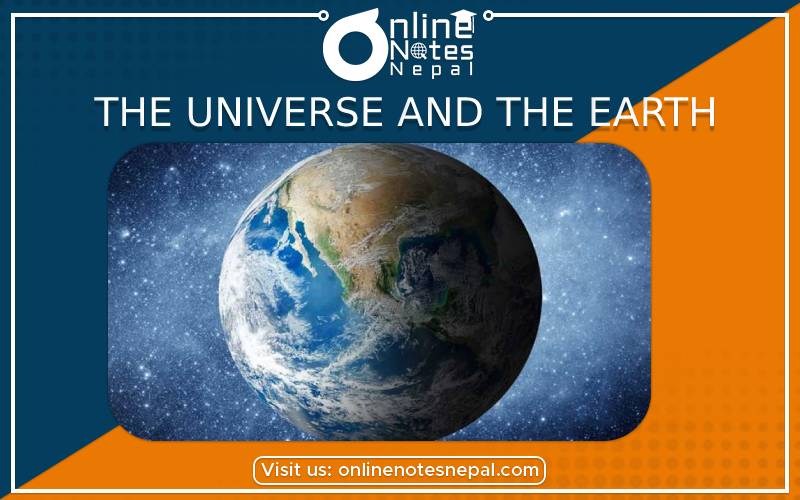Published by: Nuru
Published date: 16 Jan 2022

The universe has unlimited size and unknown shape. All the existing things include galaxies, planets, satellites, comets, and meteors. The solar system is located in Milky Way galaxy. The Milky Way galaxy is a medium sized galaxy, which consists of about 150 billion of stars. Astronomers believe that there are 1012 such galaxies in the universe. Astronomical unit (AU), Lightyear (LY) and parsec are used to measure the distance in the universe.
1 AU = 1.5 × 1011 m
1 LY = 9.46 × 1015 m
1 parsec = 3.26 LY
Solar system
Only the sun is known star, which has a group, like solar family and only one planet the earth of it has suitable conditions for organisms to survive on it. The eight planets of the solar system are Mercury, Venus, Earth, Mars, Jupiter, Saturn, Uranus and Neptune. Countless meteors, meteorites, and comets also revolve around the sun beside planet. Drifting particles called interplanetary dust and an electrically charged gas known as plasma exist in the space of the solar system.
Pluto was removed from the planet as it crosses the orbit of Neptune.
Our Earth is the only planet in our solar system which supports the life of living organisms. Earth is also known as the green planet. It is the third planet from the sun at a distance of about 150 million kilometers. It is the fifth largest planet. It takes 365.256 days for the Earth to travel around the Sun and 23.9345 hours for the Earth rotate a complete revolution. The diameter of Earth is 12,756 kilometers. The atmosphere of earth is very suitable for the life of living organisms. The atmosphere of earth is composed of various types of gasses. The majority of the atmosphere is composed of nitrogen (78%), then oxygen (21%) and other constituents (1%).Earth is believed to be existent for 450 million years & evidence are from 225 million years.The structure of earth is divided into mainly four layers namely Crust, Mantle, Inner Core and Outer Core.
The earth moves round on its axis as well as in its orbit around the sun. The motion of the earth on its axis is called diurnal motion and a complete round on its axis is called a rotation.
The earth takes about 24 hours (23 hours, 56 minutes and 4.09 seconds) to complete one rotation. A complete round around the sun is called revolution. The earth takes about 365 days (365 days, 6 hours, 9 minutes and 9.4 seconds) to complete one revolution. The axis of the earth is inclined to the plane of the ecliptic at an angle of 66.5o. So due to this, the receives different season and varying lengths of day and night.
When the earth rotates on its axis, only one portion of the earth faces the rays of the sun and experiences the day. The other portion of the earth is away from the sun’s rays which experience the night. When the earth rotates eastwards, every part of the earth is exposed to the sun at a different time. The part of the earth that comes from the darkness into the sun's rays experiences sunrise and the part of the earth that comes from the brightness (facing sun) into the darkness experiences the sunset.
A normal year is taken to have 365 days and an extra day is added every four years to the leap year. In E1 condition of the earth in the given diagram, on June 21, the earth comes in the position when the northern hemisphere is tilted towards the sun is called summer solstice in that hemisphere.In this condition, the northern hemisphere has the longest day and the shortest night but shortest day and longest night in the southern hemisphere.
During this period, the southern hemisphere has winter. In E3 (December 22) condition, the hemisphere is tilted away from the sun; it is called winter solstice. In this period, the northern hemisphere has the shortest day and the longest night but southern hemisphere has the longest day and shortest night.
Here, the southern hemisphere has summer. In E4 (22 march) and E2 (23 September), the sun is vertically overhead. These two days are termed equinoxes, meaning equal nights. 22 March is called spring equinox and 23 September is called autumn equinox. The darkness and daylight lasts for half of the year respectively beyond arctic circle and antarctic circle. In this region, the sun is never high in the sky. So, this region faces the extreme coldness.